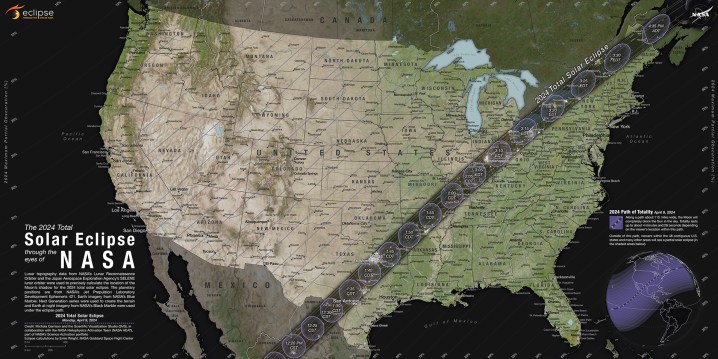NASA has just released its monthly update highlighting what to look out for in the skies over the next month.
While everyone is understandably fixed on the fast-approaching total solar eclipse (more on that later), there are also a number of other happenings to look out for.
First up, Jupiter. The fifth planet from the sun and the largest planet in our solar system can be viewed — with the naked eye — throughout this month, with its bright appearance making it easy to spot in the western sky following sunset.
If you’re up early between April 8 and April 12, take a moment to seek out Mars and Saturn as they rise together in the hour or so before sunrise. You’ll see them appear at their closest together on April 10 and 11, “about half a degree apart, or the width of the full moon,” NASA says on its website.
There’s also a sight to savor on April 10 when the slim lunar crescent (only 7% illuminated) will hang above the brightly lit Jupiter in the west after sunset.
The same evening also offers a great chance to see comet 12P/Pons-Brooks, which has been getting brighter and is observable with binoculars or a small telescope — especially if you can get to a spot away from bright city lights. “The comet will be just beneath the moon, and just right of Jupiter, but you’ll have to be quick, as it drops below 10 degrees elevation an hour after sunset and then sets an hour later,” NASA says, adding that you’ll want “a clear view toward the horizon, and be looking for it as twilight ends.”
But this month’s main event is the total solar eclipse, with the moon’s shadow set to sweep across the U.S. in a 115-mile-wide path from Maine to Texas on April 8.

“Outside the path of totality, the rest of the continental U.S. will experience a partial eclipse,” NASA says. “The amount of the sun covered by the moon at maximum eclipse depends on your distance from the path of totality.”
Digital Trends has more information on how to witness this breathtaking celestial event whether in person or online, and be sure to protect your eyes if your’e doing the former.


